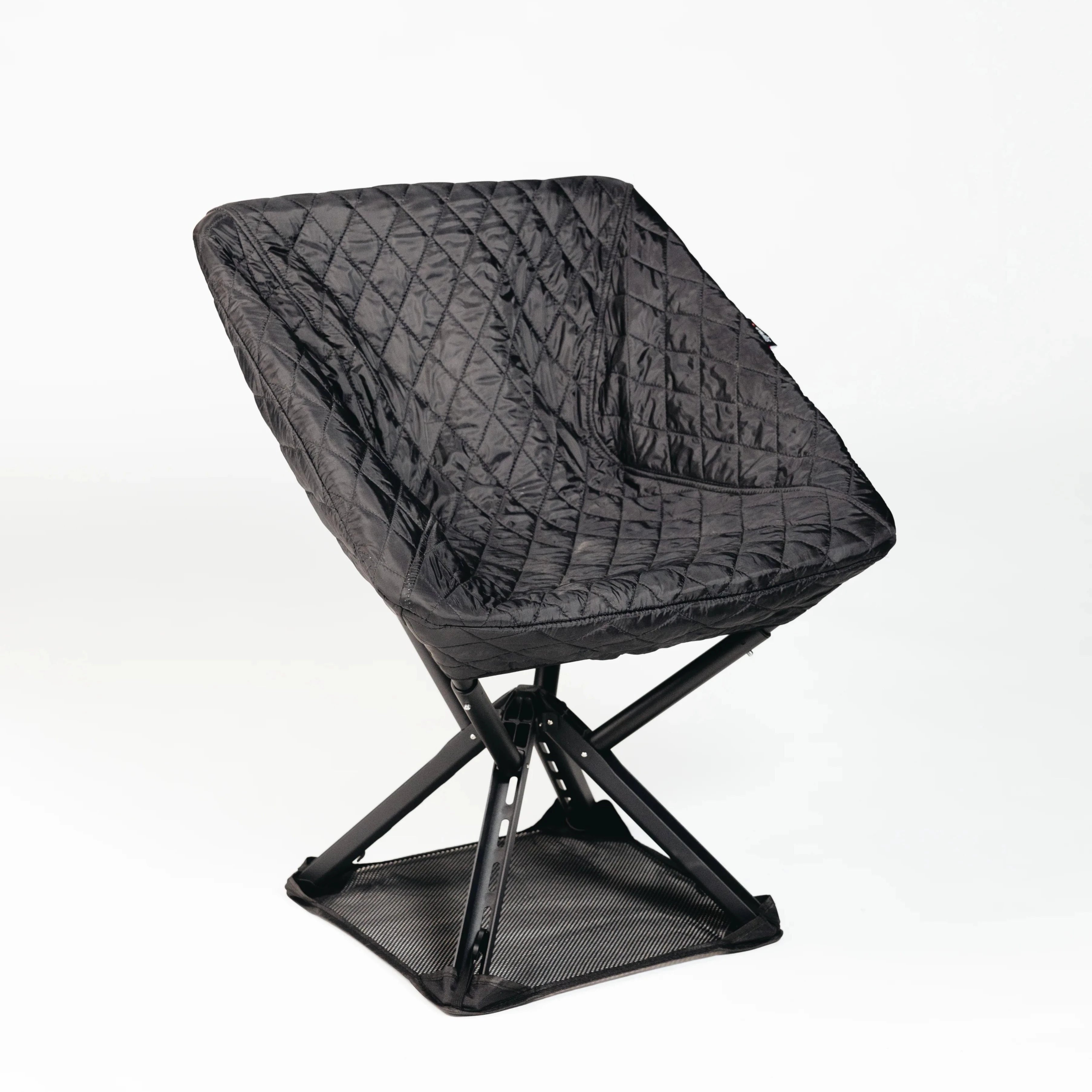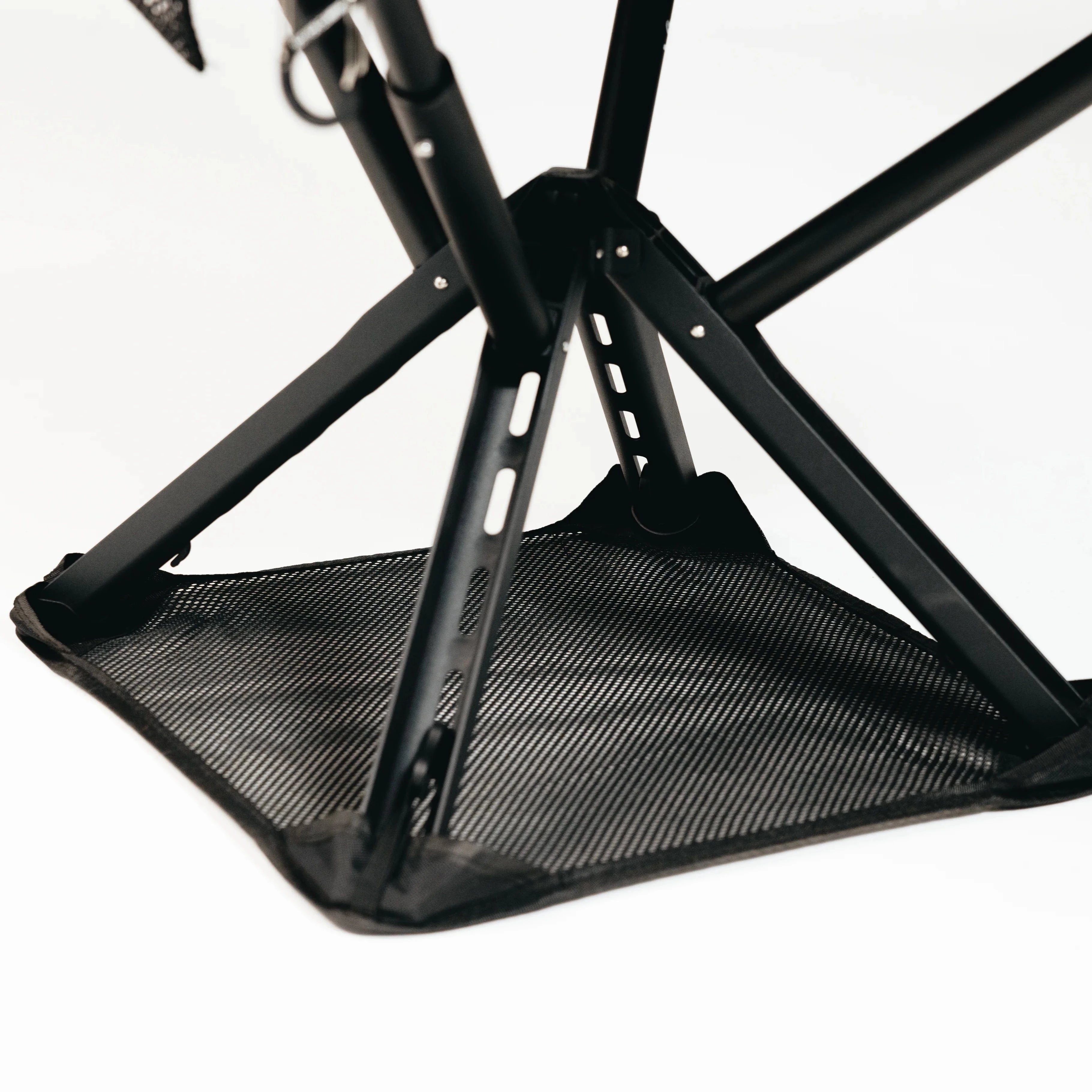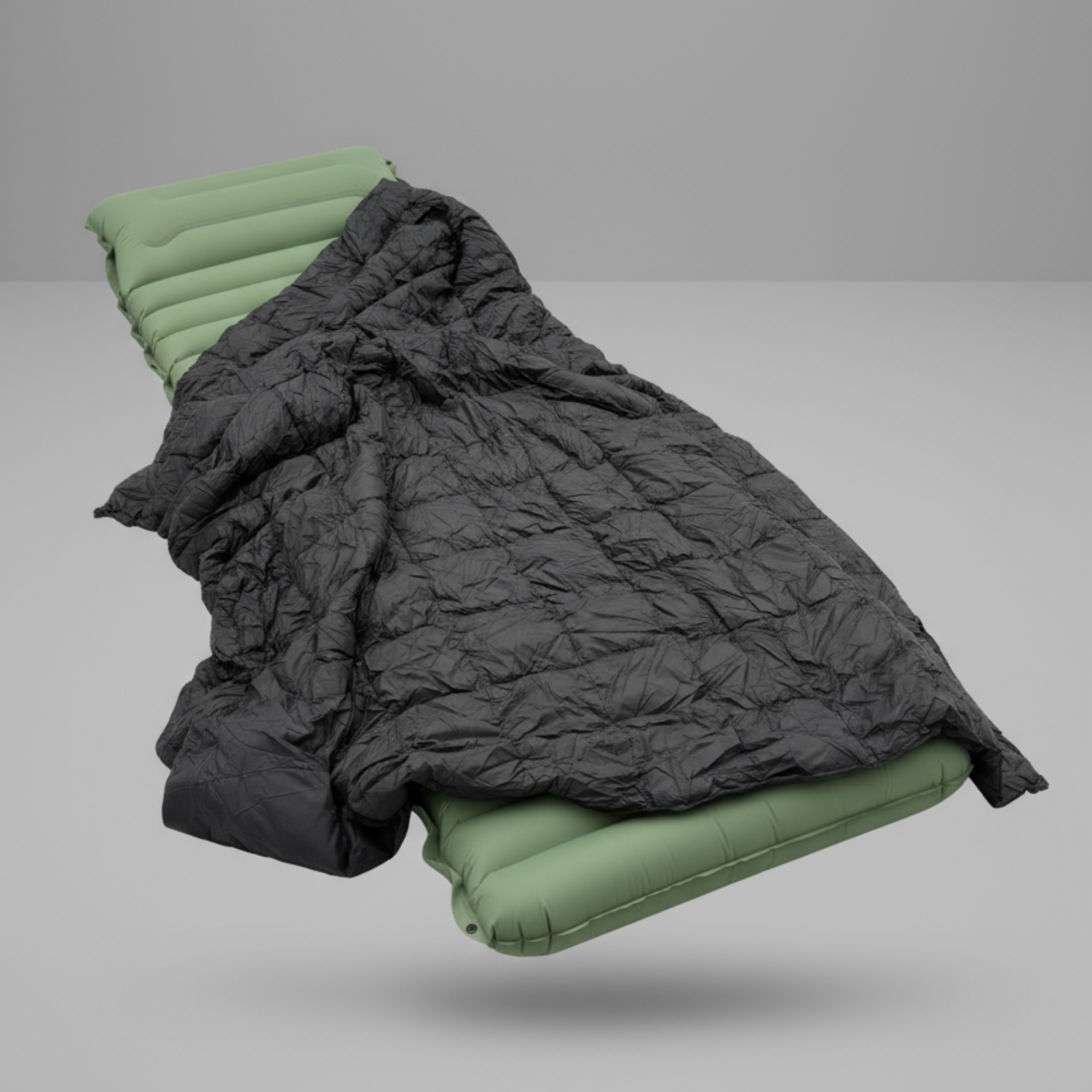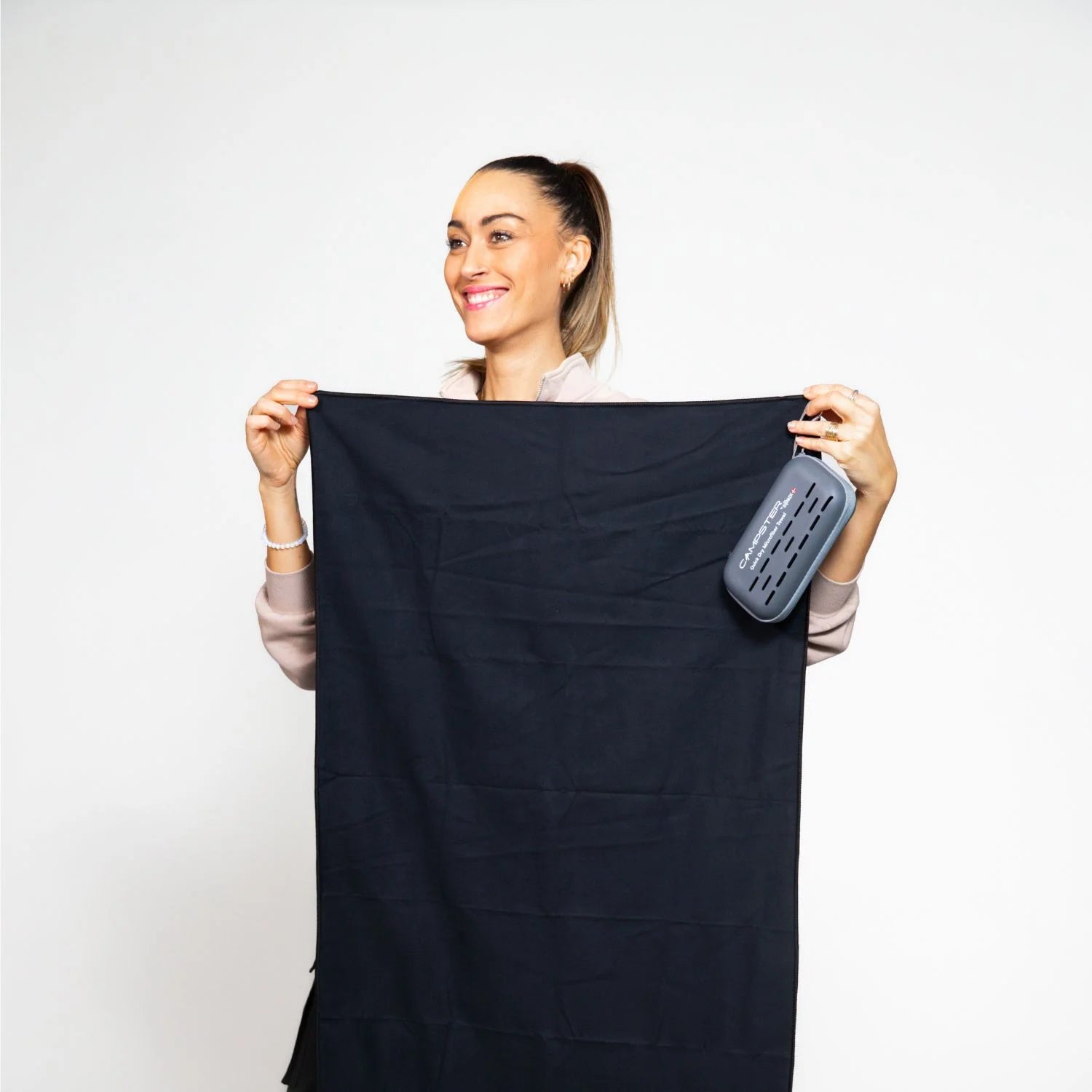Over 80 percent of outdoor enthusiasts experience discomfort after a day in standard camping chairs. The secret to lasting comfort lies in understanding what makes an ergonomic camping chair different. As more people seek better support for their bodies during outdoor adventures, the demand for thoughtfully designed seating keeps growing. Discover the science behind ergonomic camping chairs and what sets them apart from regular folding models, so you can make every moment outdoors both relaxing and pain free.
Table of Contents
- Defining Ergonomic Camping Chairs And Core Concepts
- Varieties Of Ergonomic Camping Chairs Compared
- Key Features And Functional Design Elements
- Health And Comfort Benefits For Outdoor Users
- Comparing Ergonomic And Traditional Camping Chairs
- Common Mistakes When Choosing Camping Chairs
Key Takeaways
| Point | Details |
|---|---|
| Ergonomic Design Matters | Ergonomic camping chairs are scientifically designed to support natural body mechanics and enhance comfort during outdoor activities. |
| Health Benefits | These chairs help prevent musculoskeletal pain by promoting proper posture and evenly distributing body weight. |
| Variety of Options | Ergonomic chairs come in various designs, each tailored to meet different comfort needs and environmental conditions. |
| Avoid Common Mistakes | When selecting a camping chair, prioritize ergonomic features over price and ensure it suits your body mechanics for optimal comfort. |
Defining Ergonomic Camping Chairs and Core Concepts
Ergonomic camping chairs represent a sophisticated approach to outdoor seating that goes far beyond traditional portable chairs. Unlike standard folding chairs that prioritize basic functionality, these specialized seats are scientifically designed to support human body mechanics and enhance comfort during extended outdoor experiences.
According to research from arxiv.org, chair design critically impacts user posture and physical well-being. The ChairPose study emphasizes how chair morphology directly influences comfort and health, suggesting that truly ergonomic camping chairs are engineered with precise considerations for human anatomy. Key design elements typically include:
- Lumbar Support: Curved backrest matching natural spine alignment
- Adjustable Positioning: Multiple angle configurations for personalized comfort
- Weight Distribution: Strategic frame construction reducing pressure points
- Material Flexibility: Breathable fabrics that adapt to body temperature
Research from rsisinternational.org further highlights that exceptional ergonomic chairs integrate user needs with environmental considerations. This means a camping chair isn’t just about sitting - it’s about creating a supportive microenvironment that enhances outdoor relaxation and prevents physical strain.
Understanding ergonomic principles transforms camping chairs from mere sitting surfaces into intelligent design solutions. By prioritizing human biomechanics, these chairs offer more than temporary seating - they provide a scientifically crafted rest experience that supports your body’s natural positioning and comfort requirements.
Varieties of Ergonomic Camping Chairs Compared
Ergonomic camping chairs come in a fascinating array of designs, each tailored to address specific outdoor comfort needs and physical support requirements. These aren’t just chairs - they’re precision-engineered solutions for different body types, activity levels, and environmental conditions.
One unique category is the backpack chair, as described by Wikipedia. These ingenious designs combine portability and seating functionality, allowing outdoor enthusiasts to carry their chair as part of their backpack. Typical variations include:
- Compact folding mechanisms
- Integrated backpack straps
- Lightweight materials
- Quick deployment features
- Weight-balanced construction
Another innovative design worth exploring is the kneeling chair approach. According to Wikipedia, these chairs redistribute body weight between the shins and buttocks, dramatically reducing lower back strain. While not traditionally associated with camping, this ergonomic principle offers intriguing possibilities for outdoor seating design.
Beyond these specialized types, ergonomic camping chairs generally fall into several core categories: reclining chairs with adjustable positioning, low-profile ground chairs for minimalist campers, high-back chairs providing maximum lumbar support, and compact trail chairs designed for ultralight backpacking. Each variety represents a nuanced approach to solving the complex challenge of providing comfortable, supportive seating in unpredictable outdoor environments.
Key Features and Functional Design Elements
Ergonomic camping chairs represent a complex fusion of engineering precision and human-centered design, where every element serves a specific purpose beyond mere seating. These chairs are meticulously crafted to transform outdoor sitting from a basic necessity into a scientifically optimized experience.
Research from arxiv.org emphasizes the critical role of anthropometric data in creating chairs that enhance comfort and prevent potential musculoskeletal issues. This approach means designers carefully study human body measurements to create chairs that adapt to diverse physical characteristics. Key functional design elements include:
- Adaptive Support: Contoured surfaces that match natural body curvature
- Pressure Distribution: Strategic padding that reduces stress points
A computational design framework presented by arxiv.org further illuminates the complexity of creating body-supporting surfaces. This research highlights that truly effective ergonomic chairs aren’t just about comfort - they’re about creating a biomechanical interface that supports the human body’s natural positioning and movement patterns.
The most advanced ergonomic camping chairs integrate multiple design principles: material flexibility, structural integrity, weight management, and environmental adaptability.
 These aren’t just chairs - they’re precision instruments designed to provide support, reduce physical strain, and enhance the overall outdoor experience by understanding and responding to the human body’s intricate mechanical needs.
These aren’t just chairs - they’re precision instruments designed to provide support, reduce physical strain, and enhance the overall outdoor experience by understanding and responding to the human body’s intricate mechanical needs.
Health and Comfort Benefits for Outdoor Users
Ergonomic camping chairs are more than just comfortable seating solutions - they’re critical tools for maintaining physical well-being during outdoor activities. By understanding the intricate relationship between body mechanics and seating design, these chairs actively work to prevent potential health issues associated with prolonged sitting in challenging environments.
Research from BMC Musculoskeletal Disorders provides compelling evidence supporting chair interventions as effective strategies for reducing musculoskeletal pain. For outdoor enthusiasts, this translates into several significant health advantages:
- Spine Alignment: Prevents unnatural curvature during extended sitting
- Pressure Redistribution: Minimizes stress on joints and muscular systems
- Reduced Fatigue: Supports natural body positioning
- Improved Circulation: Promotes better blood flow during extended periods
Further insights from Wikipedia suggest that flexible seating arrangements can dramatically improve attentiveness and reduce physical discomfort. In the context of outdoor experiences, this means ergonomic camping chairs do more than provide a place to sit - they actively enhance your ability to enjoy and engage with your environment.
Beyond immediate comfort, these chairs represent a proactive approach to physical health. By supporting proper posture, distributing body weight effectively, and adapting to individual body mechanics, ergonomic camping chairs transform sitting from a passive experience into an opportunity for physical preservation and enhanced outdoor enjoyment.
Comparing Ergonomic and Traditional Camping Chairs
Ergonomic camping chairs represent a quantum leap beyond traditional camping chairs, transforming what was once a simple sitting solution into a sophisticated physical support system. While traditional chairs focus primarily on basic functionality, ergonomic designs prioritize the complex relationship between human physiology and outdoor seating.
According to Wikipedia, alternative seating designs aim to reduce physical strain by fundamentally reimagining weight distribution. In the context of camping chairs, this translates to several key comparative differences:
- Structural Design: Ergonomic chairs feature scientifically contoured surfaces
- Weight Management: Precise engineering to minimize muscular stress
- Material Selection: Advanced fabrics that adapt to body temperature
- Postural Support: Intentional shaping to maintain natural spine alignment
The concept of multi-functional design is further explored in Wikipedia’s discussion of backpack chairs, which illustrate how modern outdoor seating transcends traditional limitations. Traditional camping chairs typically offer a one-dimensional sitting experience, whereas ergonomic variants integrate portability, comfort, and health-conscious engineering.
Ultimately, the difference between ergonomic and traditional camping chairs is philosophical. Traditional chairs ask, “Can you sit here?” Ergonomic chairs ask, “How can I support your body’s natural mechanics while you enjoy the outdoors?” This fundamental shift represents a more intelligent, user-centered approach to outdoor seating design.

Common Mistakes When Choosing Camping Chairs
Selecting the right camping chair is more nuanced than most outdoor enthusiasts realize. What seems like a straightforward purchase can quickly become a painful experience if you overlook critical ergonomic considerations and design elements that directly impact your comfort and physical well-being.
Research from International Journal of Social Sciences and Management Research emphasizes the critical importance of ergonomic design in minimizing physical stress. Common mistakes that campers frequently make include:
- Ignoring Weight Distribution: Choosing chairs without proper load-balancing mechanisms
- Overlooking Material Quality: Selecting chairs with inadequate support and durability
- Disregarding Body Specifics: Buying one-size-fits-all solutions instead of personalized designs
- Prioritizing Price over Functionality: Compromising comfort for minimal cost savings
Additional research from Humen Tech highlights how non-ergonomic chairs can lead to significant physical discomfort. Many campers mistakenly view chairs as generic commodities rather than precision-engineered support systems designed to protect their body during outdoor experiences.
The most critical mistake is treating camping chairs as mere sitting surfaces instead of sophisticated tools for physical support. An informed approach considers individual body mechanics, intended usage environment, and long-term physical health implications - transforming chair selection from a simple purchase into a strategic investment in your outdoor comfort and well-being.
Discover True Outdoor Comfort with Ergonomic Seating Solutions
Experiencing discomfort from traditional camping chairs is a common challenge faced by outdoor lovers seeking reliable support. As the article highlights, ergonomic camping chairs focus on features like lumbar support, weight distribution, and adjustable positioning to protect your spine and reduce fatigue during long outdoor sessions. If you want to transform your camping experience and avoid the pitfalls of poor posture and pain, it is essential to invest in a chair designed with your body’s natural mechanics in mind.

Explore lightweight, foldable options such as the Campster II and Sitpack Zen available at Sitpack. These innovative chairs blend durability with ergonomic design to keep you comfortable wherever you go. Act now to enjoy fast worldwide delivery and a 45-day satisfaction guarantee on all orders. Start supporting your body’s wellbeing while elevating your outdoor relaxation by choosing the perfect ergonomic seating at Sitpack. Your next adventure deserves a chair that works as hard as you do.
Frequently Asked Questions
What are ergonomic camping chairs?
Ergonomic camping chairs are specially designed outdoor seating solutions that prioritize human body mechanics and comfort. They offer features like lumbar support, adjustable positioning, and weight distribution to enhance the user’s sitting experience during outdoor activities.
How do ergonomic camping chairs compare to traditional camping chairs?
Ergonomic camping chairs possess advanced design elements such as contoured surfaces, improved weight management, and specific posture support, offering a more comfortable sitting experience compared to traditional camping chairs, which typically focus on basic functionality.
What are the health benefits of using ergonomic camping chairs?
Using ergonomic camping chairs can help maintain spine alignment, reduce joint strain, minimize fatigue, and promote better circulation, making them an essential tool for enhancing physical well-being during outdoor activities.
What features should I look for in an ergonomic camping chair?
Key features to consider include lumbar support, adjustable positioning, breathable materials, and effective pressure distribution. These elements are designed to enhance comfort and adapt to individual body mechanics for a superior outdoor seating experience.














